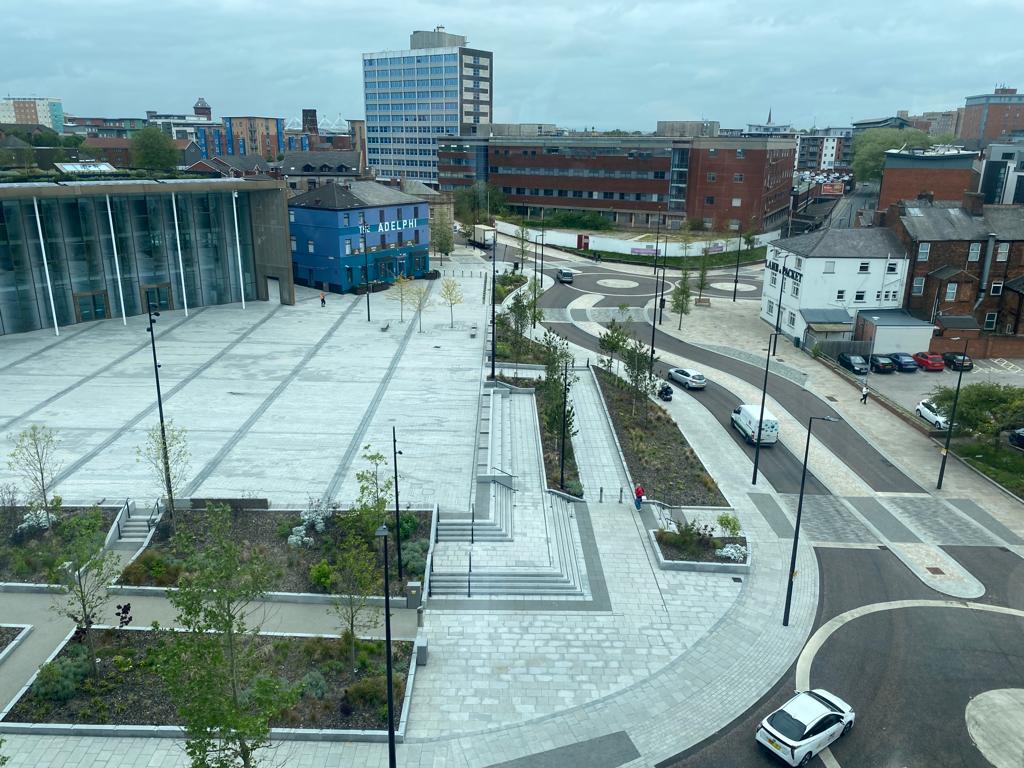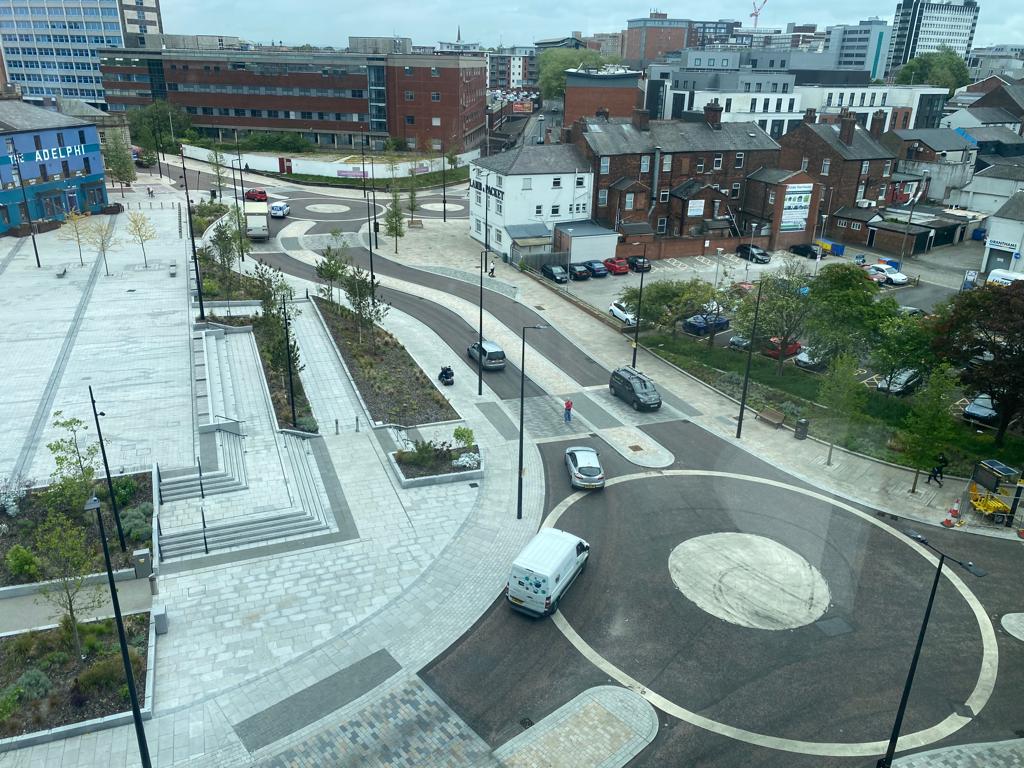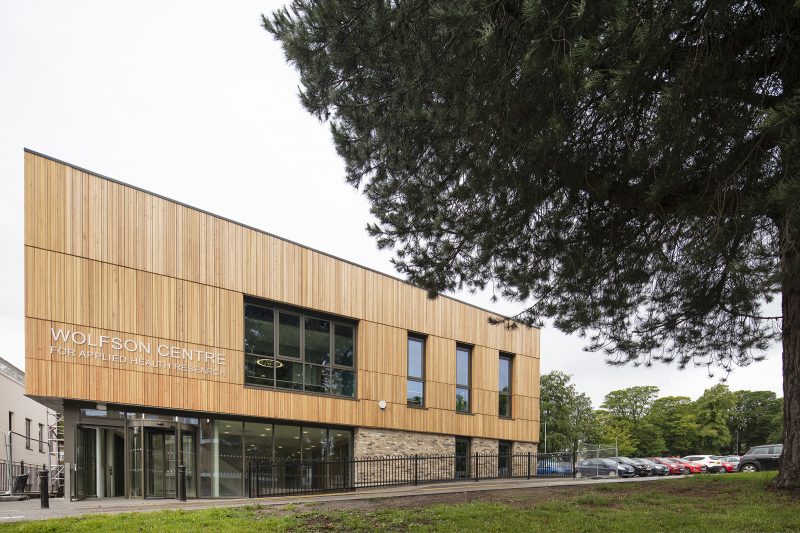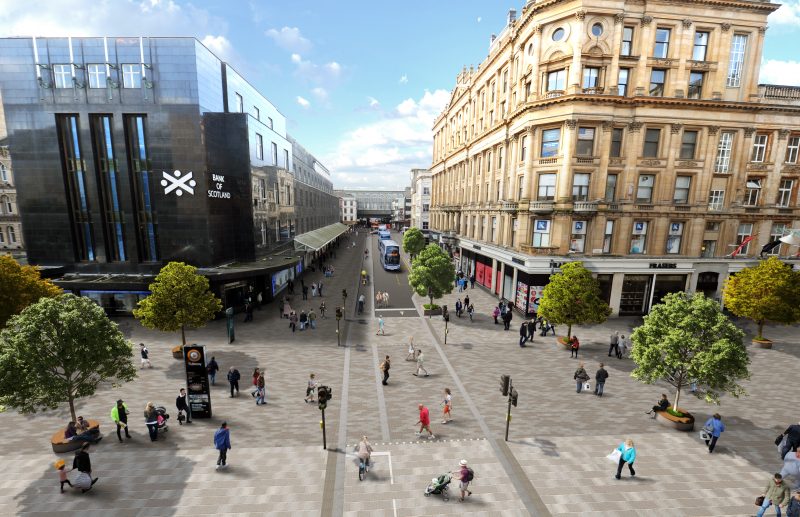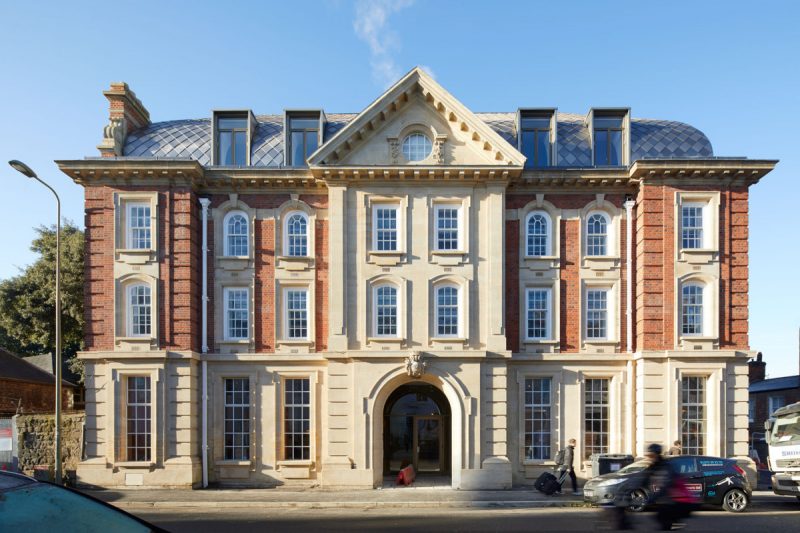Highway improvement works associated with the University’s Student Centre & Engineering Innovation Centre to create better connectivity through the highways network and creating a sense of place for the University in Preston town centre.
The scheme involves the realignment of the streets to provide a new square and world class setting for the buildings as well as reallocation of space to pedestrians and cyclists. A key element of the scheme is the removal of traffic signals to create a more civilised movement network.
The design includes significant adjustment in the horizontal and vertical alignment of the streets as well as resurfacing, tree planting and further environmental improvements as well as significant utilities diversions.
We are appointed under Balfour Beatty as Lead Designer to enable efficient delivery of the transport strategy, civils and highways design. Our main objective is to create a setting for the buildings that encourages connectivity, with an emphasis on pedestrians and enhancing the existing landscaping.
The new Student Centre building is set to be the new ‘heart of campus’ with the public realm being used to open up the site and create an attractive university frontage with a large public square at the entrance. We are working closely and collaboratively with both design teams for the Student Centre and Engineering Innovation Centre building alongside the landscape architects and Lancashire County Council. We have provided advice to both stakeholders and Lancashire County Council highway authority, producing an overall transport strategy report and S278 designs.
To provide added value to the client we developed a BIM Model to show the public realm alongside all buildings. This gave the University a holistic view of their whole campus and assisted with the presentation for consultation events. It also allowed us as designers to see all existing and proposed utilities to prevent clashes across a complex site.
Another key objective of the highways design is to improve vehicle and servicing access to the various campus buildings, ensuring the appropriate bays, loadings and turning circles are developed into the design based on the requirements for each of the faculties.
The works started on site in Summer 2019 and Civic Engineers are providing a full-time site-based monitoring role advising on compliance with the design information. Works completed September 2021.

